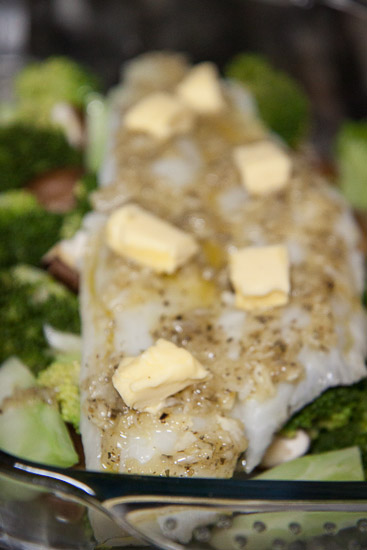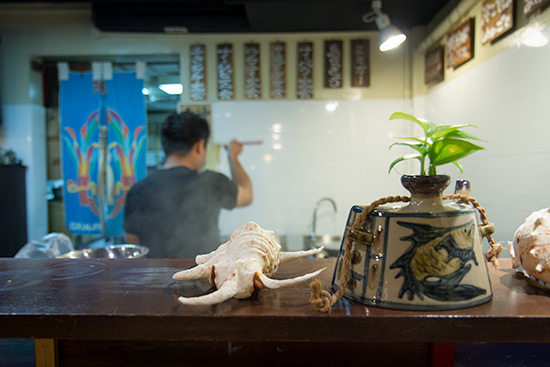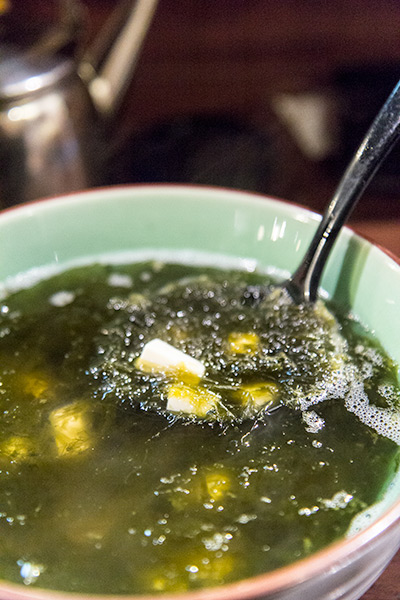We're back to our Steak cooking exploration! Once again it's worth mentioning our prime motivation ... money! Above all else the #1 determinant for how good a steak will be is how good the meat is in the first place - and good meat doesn't come cheap. Hence the best steakhouses always charge top dollar, and the cheap steakhouses like
Aston's almost always suck. So if you're looking to eat quality steak on a budget, cook it yourself at home!
Two weeks ago we blogged about the
Freezer then Low Temperature Oven method. Today we're going to try the latest rage -
Sous Vide. Sous Vide is literally French for "under vacuum," but in a culinary setting it means sealing your food in a bag and then slow cooking it in a water bath at a set temperature such that it cooks slowly and evenly. We decide to use the
SideKIC Kitchen Immersion Circulator, which is a compromise between a full blown home sous vide solution (like the
Sous Vide Supreme) and ghetto hacking one out of a rice cooker or a cooler box.
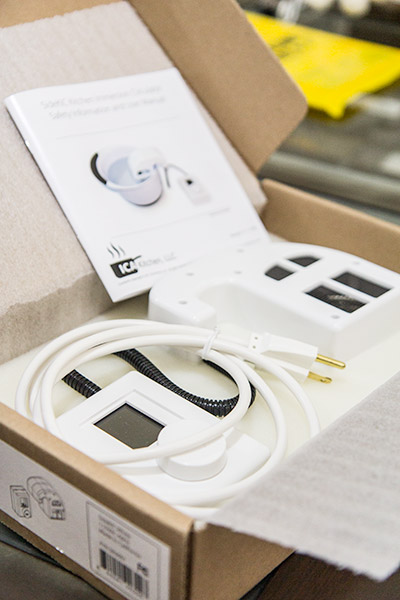
The SideKIC comes in two parts - a combined 300watt heater element and circulator, and an external temperature controller. You can see here that the circulator does quite a nice job of getting the water moving around the container. 300 watts is not a lot of power, though, so you'd be better off pre-heating the water using a kettle or something.
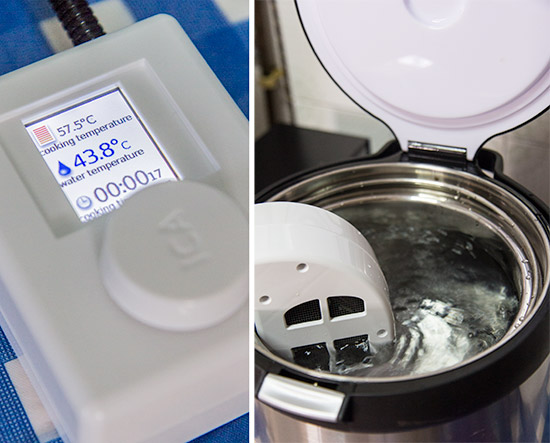
Our meat of choice tonight is an Aussie Wagyu Striploin - gorgeously marbled and a full one-and-a-half inches thick. With a little sprinkling of smoked salt, pink himalayan salt, and loads of freshly cracked black pepper.
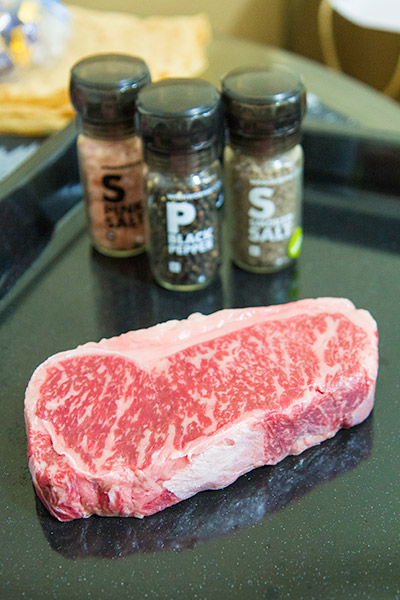
Into the ziplock bag! In keeping with the theme of being somewhat budget, we didn't buy a vacuum sealer. Instead we simply used water displacement (i.e. you dip the steak and the bag gradually into a container full of water, and the water pushes the air out. Yes yes you don't
really get a vacuum, but it's close enough that it doesn't really matter.
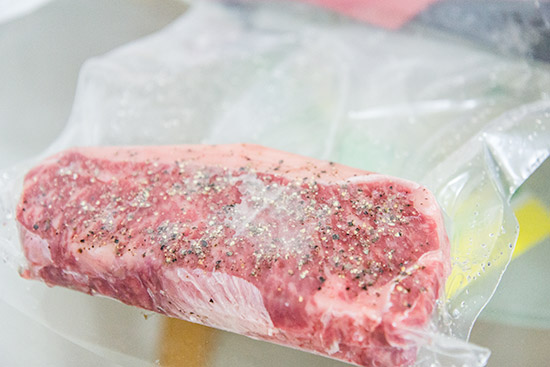
Into the water the steak goes! Fast forward about an hour later and it's done! At this point the steak is entirely evenly cooked perfectly the way you want it (we had ours at 56 degrees Celcius for Medium Rare). You could eat it right now and it would be pretty delicious. But to make it even better, you just have to sear it to get that nice Maillard reaction going on the crust.
Blowtorch or
Pan Sear as how you like it, and then serve!

With the sear, the steak just becomes more fragrant, more aromatic, and looks a whole lot better too - wouldn't you agree?

And of course, slicing the steak in half shows you just how evenly the meat is cooked. Unlike regular steak cooking methods (and particularly for thicker cuts), a 'medium rare' steak really means only the middle is medium rare, gradually going to medium - medium well and well done on the outer layer. With the sous vide and other slow cooking methods, the steak is medium rare the entire way through. Juicy, fatty, yummy, absolutely delicious!

For Sous Vide, Medium Rare is the best way to go (cooked to 55-56 deg C). Because of the low cooking temperature, the intramuscular fats don't quite render if you cook it to rare. If you really must have your meat a little less pink, Medium is about 60 deg C and Medium Well is about 64-65 deg C.
Now, Sous Vide doesn't magically make your steak 10 times better. Don't expect it to be better than Morton's or Cut or The Fat Cow. What you
do get, though, is brainless, zero-skill required, perfectly cooked meat. Every single time. Because the steak's temperature will never go above whatever temperature the water is at, it is impossible to overcook it even if your dinner gets delayed by a couple of hours.
Of course the main drawback is the (relatively) lengthy cooking time - at least an hour, so it's perhaps not the best if you're home late from work and just want a quick dinner. But if you've got a bit of time to put in, the 'dunk and forget' and sheer consistency of cooking in a water bath means this is perhaps
the perfect way for the home chef to cook steak.
Note: We have an additional SideKIC Kitchen Immersion Circulator available for sale. If you're interested do drop an email at shuigao(at)gmail(dot)com. Singapore, JB and KL only.
Click here for our blog page Cooking Classes for more recipes. Hope you will be inspired~











































